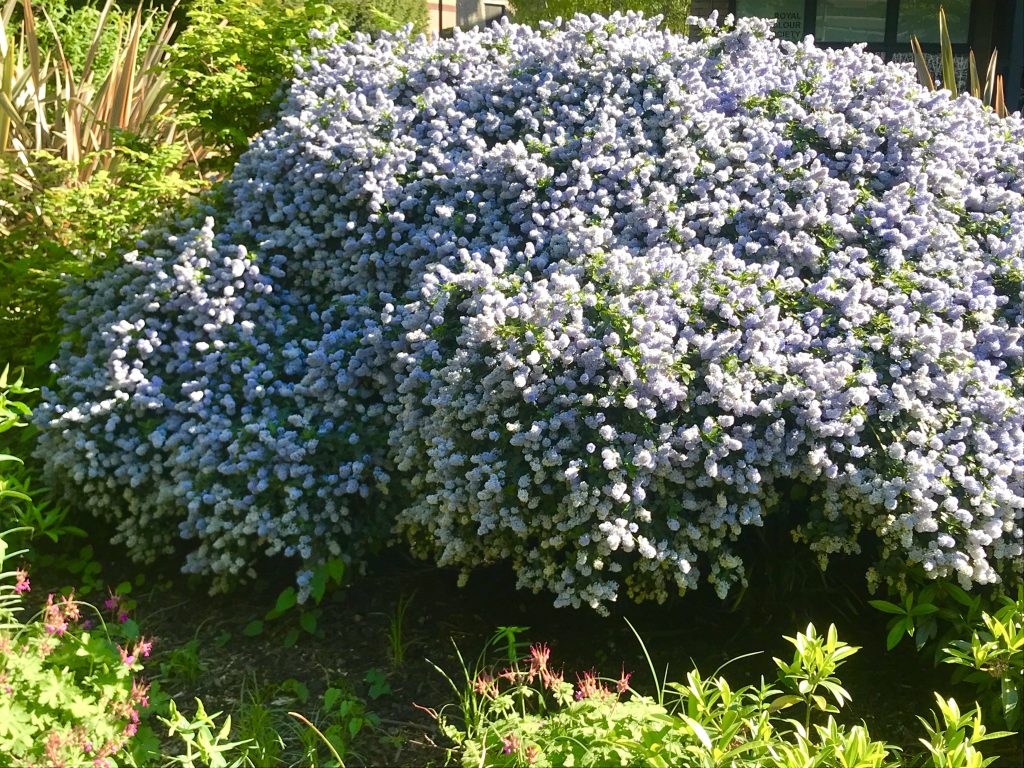Ceanothus: Adding Vibrant Blue to Your Garden with the California Lilac
Ceanothus is a remarkable flowering shrub that can be grown as a free-standing specimen or trained against a wall, offering an incredible display of vibrant color to any garden. The flowering time of Ceanothus varies depending on the species, occurring either in late spring or late summer. This versatile plant is generally easy to cultivate, with many varieties retaining their evergreen foliage. However, there are also deciduous types available, and certain cultivars even boast fragrant blossoms.
During one of my recent walks, I stumbled upon a captivating burst of color in a roadside garden. It was an extraordinary hue, almost resembling blue. After conducting some research, I discovered that this enchanting plant is none other than Ceanothus, also known as the California Lilac.
Family and Habitat
Belonging to the Rhamnaceae or Buckthorn family, Ceanothus shares its botanical lineage with other notable plants such as Buckbrush, SoapBush, and various species of California Lilac. Native to North America, Ceanothus thrives in a range of environments, particularly in California and Oregon. Its height can vary from 50cm to 3m (2 to 10ft), with some varieties even reaching the size of a small tree, growing up to 6m (20ft).
Flowers and Leaves
Ceanothus exhibits alternate leaves that are arranged oppositely along its branches. The flowers, gathered in clusters, showcase a captivating palette of white, pink, purple, and, most notably, blue. Among the Ceanothus species, the widely recognized Ceanothus velutinus is native to western North America, particularly California and Oregon.
Cultivation Guide: Growing Ceanothus
Planting: Opt for well-draining soil and plant Ceanothus in spring for optimal growth. Choose a sunny location, as Ceanothus tends to flower better in full sun.
Watering: Water the plant regularly until it becomes well-established. Once established, Ceanothus demonstrates drought resistance, although it should not be subjected to soggy soil conditions.
Deadheading: While deadheading Ceanothus flowers can be a daunting task due to their abundance, it can help prolong the plant’s blooming period and maintain a neat appearance, particularly for compact bushes.
Pruning: For evergreen, spring-flowering varieties, prune them after the flowering season. Late summer-flowering varieties should be pruned in spring, removing part of the previous year’s new growth. Deciduous Ceanothus should be pruned in early spring since they bear flowers on new growth. If hard pruning is necessary for deciduous varieties, it is best performed in February or March.
Propagation:
Ceanothus can be propagated through cuttings or seeds. Semi-ripe cuttings are suitable for evergreen varieties, and summer or autumn is an ideal time to attempt propagation. Softwood cuttings are more appropriate for the deciduous variety. Additionally, Ceanothus can be propagated from seeds, which should be soaked in hot water for 24 hours before being exposed to a cold environment for a couple of months. Finally, the seeds can be planted in a warm environment, but germination may take several months.
With its vibrant blue flowers, Ceanothus, or the California Lilac, adds a touch of enchantment to any garden or landscape. Whether grown as a standalone shrub or trained against a wall, this captivating plant offers a stunning display of color and is relatively easy to cultivate. By following proper planting, watering, deadheading, and pruning techniques, as well as utilizing propagation methods, gardeners can ensure the successful growth and longevity of their Ceanothus plants. Embrace the beauty of the California Lilac and enjoy the breathtaking sight of its vivid blue blossoms gracing your garden.







